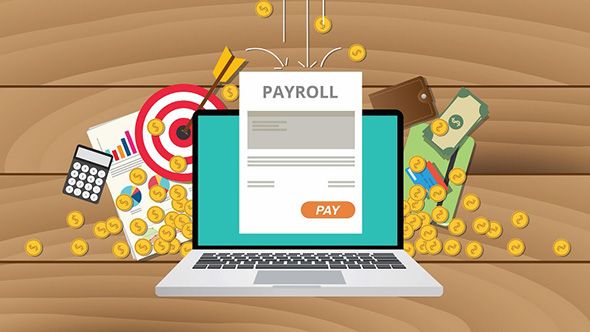As we move further into the digital age, businesses are continuously adopting technology to streamline operations, improve efficiency, and reduce costs. Payroll, a critical business function, is not exempt from this shift. Traditionally, payroll processes were manual and prone to errors, requiring human resources teams to spend significant time calculating wages, taxes, deductions, and benefits. With the advancement of payroll software and the integration of artificial intelligence (AI) and automation, the payroll landscape is changing rapidly. In 2024, these technologies are expected to take center stage in transforming systems. This article will explore the future of payroll software, focusing on how AI and automation will shape the industry, the benefits they offer, challenges to adoption, and key trends to watch for in the coming years.
1. The Evolution of Payroll Software
Payroll software has come a long way since its inception. Initially, payroll processes were paper-based, with professionals manually calculating salaries, deductions, and taxes. The development of computer software in the 1980s and 1990s simplified management, but it was still largely dependent on human input and oversight. Over time, cloud-based payroll solutions emerged, allowing companies to manage more efficiently and securely from anywhere with an internet connection.
Today, AI and automation are becoming integral to payroll systems. These technologies offer the potential to eliminate manual errors, reduce administrative burden, and ensure compliance with ever-changing regulations. The integration of AI and automation in payroll software represents the next significant leap in payroll management, providing businesses with new capabilities that are set to revolutionize the way is handled in 2024 and beyond.
2. The Role of AI in Payroll Software
Artificial intelligence is increasingly being incorporated into payroll systems to enhance accuracy, efficiency, and decision-making. AI-powered solutions can analyze large datasets in real-time, identify patterns, and make predictions that were previously impossible with traditional systems.
2.1 Predictive Analytics
One of the most promising applications of AI in is predictive analytics. Payroll data contains valuable insights into employee behavior, absenteeism, turnover rates, and salary trends. AI-driven payroll systems can use this data to predict future expenses, identify trends in employee compensation, and even detect potential compliance risks.
For example, an AI-powered payroll system can analyze an employee’s historical time and attendance records to predict future absenteeism patterns. This information can help employers anticipate labor costs and make informed decisions about staffing levels and workforce management.
2.2 Fraud Detection and Compliance
AI can also enhance fraud detection and ensure compliance with tax regulations and labor laws. Payroll fraud is a significant concern for businesses, especially for organizations with large workforces. AI algorithms can monitor payroll data for unusual patterns, such as unauthorized changes in employee records, duplicate payments, or irregular salary adjustments. By flagging these anomalies in real time, AI-powered payroll software can help organizations detect and prevent payroll fraud before it becomes a significant issue.
Additionally, payroll systems must comply with complex and ever-changing tax laws and regulations. AI can help by automatically updating tax tables and ensuring that deductions and withholdings are calculated accurately based on the latest legal requirements. This reduces the risk of errors and helps businesses avoid costly penalties for non-compliance.
2.3 Natural Language Processing (NLP) for Employee Queries
Natural Language Processing (NLP), a branch of AI, enables software to respond to employee queries in a conversational manner. Employees often have questions about their pay, deductions, or benefits, and AI-powered payroll systems equipped with NLP can answer these queries without the need for human intervention. For example, an employee might ask, “How much was deducted for health insurance this month?” or “When will my next paycheck be issued?” An AI-powered system can provide instant, accurate responses, improving employee satisfaction and reducing the workload for HR teams.
3. Automation in Software
Automation is the backbone of modern payroll systems, eliminating the need for repetitive manual tasks and reducing the likelihood of human error. In 2024, automation will play an even more significant role in payroll software, allowing businesses to operate more efficiently and with greater accuracy.
3.1 Automating Routine Payroll Tasks
Payroll involves several routine tasks, such as calculating wages, processing deductions, and generating pay stubs. These tasks can be time-consuming and prone to errors when done manually. Automated payroll systems can perform these calculations automatically, ensuring that employees are paid accurately and on time.
For example, automation can calculate overtime pay based on an employee’s time and attendance records, apply deductions for taxes and benefits, and generate payroll reports for management. By automating these tasks, businesses can reduce administrative workload and focus on more strategic activities.
3.2 Integration with Other HR Systems
In 2024, payroll software will increasingly be integrated with other HR systems, such as time and attendance tracking, benefits management, and performance management. This integration allows for seamless data flow between systems, reducing the need for manual data entry and ensuring that payroll calculations are based on the most up-to-date information.
For instance, when an employee clocks in and out of work, their time and attendance data can be automatically transferred to the payroll system, which calculates their wages based on hours worked. Similarly, if an employee changes their benefits elections, the payroll system can automatically adjust their deductions to reflect these changes.
3.3 Automated Tax Filing
Tax filing is a complex and time-consuming aspect of payroll management, and businesses must comply with various federal, state, and local tax laws. In 2024, automated payroll systems will take tax compliance to the next level by automatically filing taxes on behalf of the business. These systems can generate and file payroll tax returns, submit payments to tax authorities, and issue W-2s and 1099s to employees and contractors.
Automated tax filing not only saves time but also reduces the risk of errors and ensures that businesses remain compliant with tax laws. This feature is especially valuable for small and medium-sized businesses, which may not have the resources to dedicate to tax compliance.
4. Benefits of AI and Automation in Payroll Software
The integration of AI and automation in payroll software offers numerous benefits to businesses of all sizes. In 2024, these technologies will become essential for companies looking to improve their payroll processes and stay competitive in the marketplace.
4.1 Increased Accuracy
One of the most significant advantages of AI and automation in payroll software is increased accuracy. Manual payroll processes are prone to errors, such as incorrect data entry, miscalculated wages, or missed tax deadlines. AI-powered payroll systems can reduce these errors by automating calculations and identifying potential issues before they become problems.
4.2 Time Savings
Payroll is a time-consuming task, especially for businesses with large workforces. AI and automation can significantly reduce the time spent on payroll processing by automating routine tasks, such as wage calculations, tax filings, and report generation. This allows HR teams to focus on more strategic initiatives, such as employee engagement and talent development.
4.3 Cost Savings
By reducing the time and effort required to manage payroll, AI and automation can lead to significant cost savings for businesses. Automated payroll systems eliminate the need for manual data entry and reduce the risk of costly errors, such as underpayment or overpayment of employees. Additionally, automated tax filing helps businesses avoid penalties for non-compliance with tax laws.
4.4 Improved Compliance
Staying compliant with payroll regulations is a challenge for businesses, especially as tax laws and labor regulations change frequently. AI-powered payroll systems can automatically update tax tables and ensure that payroll calculations comply with the latest legal requirements. This reduces the risk of compliance issues and helps businesses avoid fines and penalties.
4.5 Enhanced Security
Payroll data is highly sensitive, and businesses must take steps to protect it from unauthorized access. AI and automation can enhance the security of payroll systems by using encryption and multi-factor authentication to protect employee data. Additionally, AI-powered systems can monitor for unusual activity, such as unauthorized access attempts or changes to payroll records, and alert administrators to potential security threats.
5. Challenges to Adoption
While the benefits of AI and automation in payroll software are clear, there are also challenges to widespread adoption. These challenges include:
5.1 Cost of Implementation
Implementing AI-powered payroll systems can be expensive, especially for small businesses with limited budgets. The cost of software licenses, implementation, and training can be a barrier to adoption for some organizations.
5.2 Data Privacy Concerns
AI-powered payroll systems rely on large amounts of employee data to function effectively. This raises concerns about data privacy and the potential for misuse of sensitive information. Businesses must ensure that their payroll systems comply with data privacy regulations, such as the General Data Protection Regulation (GDPR), and take steps to protect employee data.
5.3 Resistance to Change
Some businesses may be resistant to adopting AI and automation in payroll systems, particularly if they have been using manual processes for many years. Overcoming this resistance requires educating employees and management about the benefits of these technologies and providing training to ensure a smooth transition.
6. Future Trends in Payroll Software
In 2024 and beyond, several key trends will shape the future of software:
6.1 Increased Use of AI for Decision-Making
AI will play an increasingly important role in decision-making within payroll systems. AI-powered solutions will be able to provide real-time insights into workforce costs, allowing businesses to make more informed decisions about hiring, compensation, and benefits.
6.2 Mobile Payroll Solutions
With the rise of remote work and the gig economy, mobile payroll solutions will become more prevalent in 2024. Employees will expect to access their payroll information and request time off from their smartphones or tablets. Mobile apps will allow businesses to offer a more flexible and convenient
Whirlpool 1.5 Ton 3 Star, Magicool Inverter Split AC (MAGICOOL 15T 3S INV CNV S5K2PP0, Copper, Convertible 4-in-1 Cooling Mode, HD Filter White)
₹30,490.00 (as of 24 April, 2025 17:13 GMT +05:30 - More infoProduct prices and availability are accurate as of the date/time indicated and are subject to change. Any price and availability information displayed on [relevant Amazon Site(s), as applicable] at the time of purchase will apply to the purchase of this product.)amazon basics Vacuum Compression Storage Bags with Hand Pump - Large, 5-Pack
₹749.00 (as of 24 April, 2025 17:13 GMT +05:30 - More infoProduct prices and availability are accurate as of the date/time indicated and are subject to change. Any price and availability information displayed on [relevant Amazon Site(s), as applicable] at the time of purchase will apply to the purchase of this product.)SHAYONAM 3600mAh Rechargeable Desk Fan (90° Rotate), Portable Table Fan,USB Fan, USB Battery,4 Speed for Home Office Travel-The battery life is 8 hours with the maximum wind speed
₹899.00 (as of 24 April, 2025 17:13 GMT +05:30 - More infoProduct prices and availability are accurate as of the date/time indicated and are subject to change. Any price and availability information displayed on [relevant Amazon Site(s), as applicable] at the time of purchase will apply to the purchase of this product.)DIVIJA STORE Study Table Bed Table Premium Laptop Table/and Portable Plastic/Writing Desk for Office/Home/School (Wood)
₹299.00 (as of 24 April, 2025 17:13 GMT +05:30 - More infoProduct prices and availability are accurate as of the date/time indicated and are subject to change. Any price and availability information displayed on [relevant Amazon Site(s), as applicable] at the time of purchase will apply to the purchase of this product.)Study Table Bed Table Premium Laptop Table/Foldable and Portable Wooden/Writing Desk for Office/Home/School~~ (COTTED~Black)
₹409.00 (as of 24 April, 2025 17:13 GMT +05:30 - More infoProduct prices and availability are accurate as of the date/time indicated and are subject to change. Any price and availability information displayed on [relevant Amazon Site(s), as applicable] at the time of purchase will apply to the purchase of this product.)Discover more from The General Post
Subscribe to get the latest posts sent to your email.





